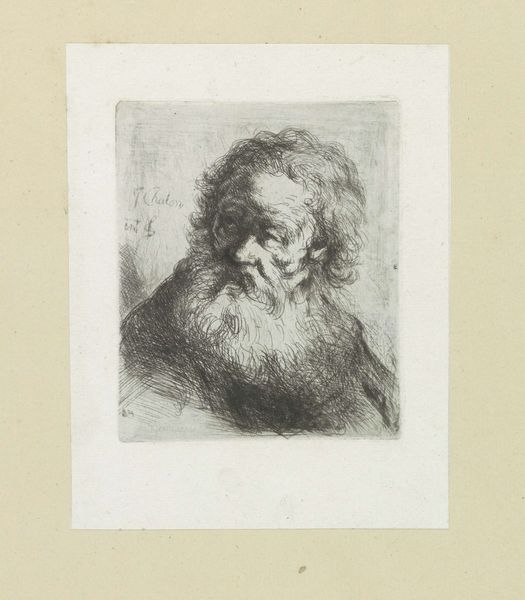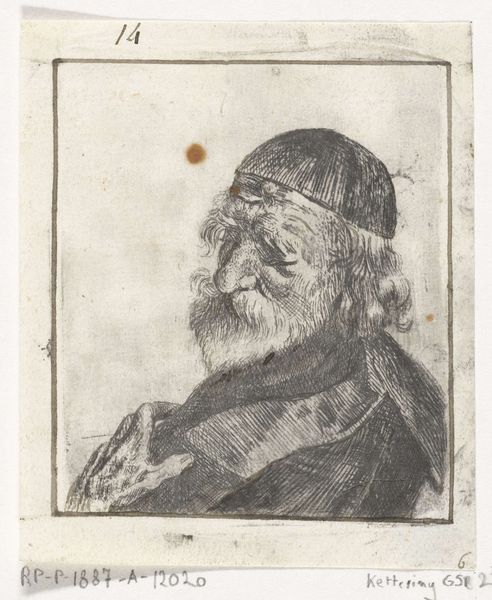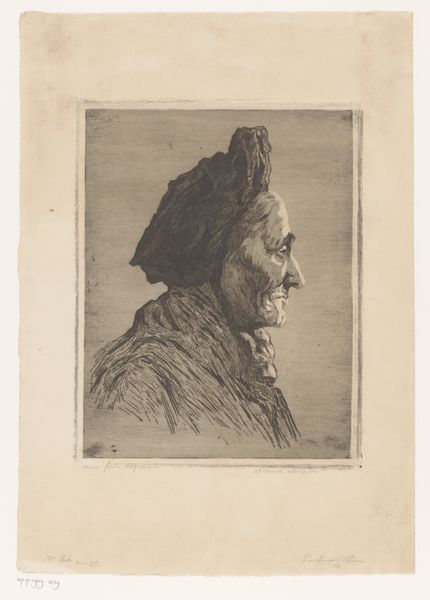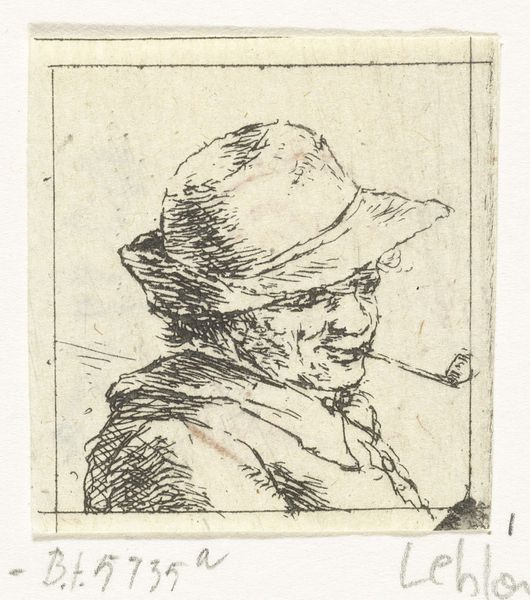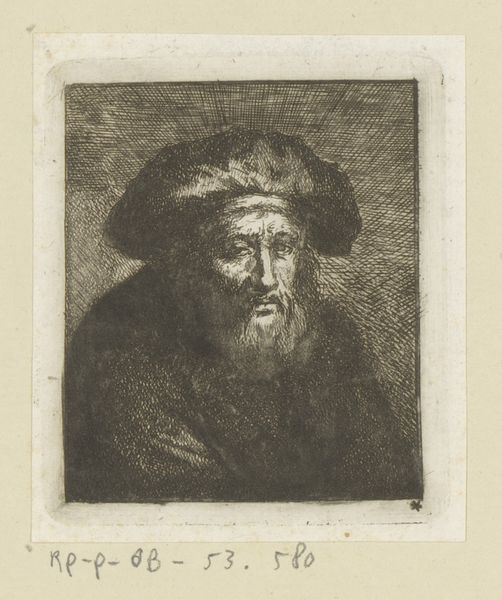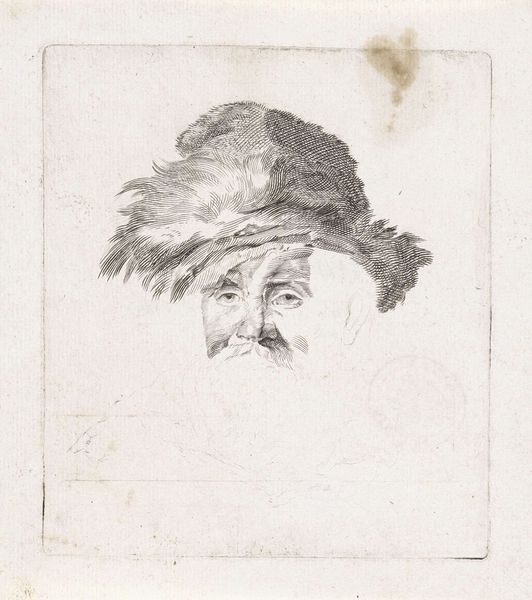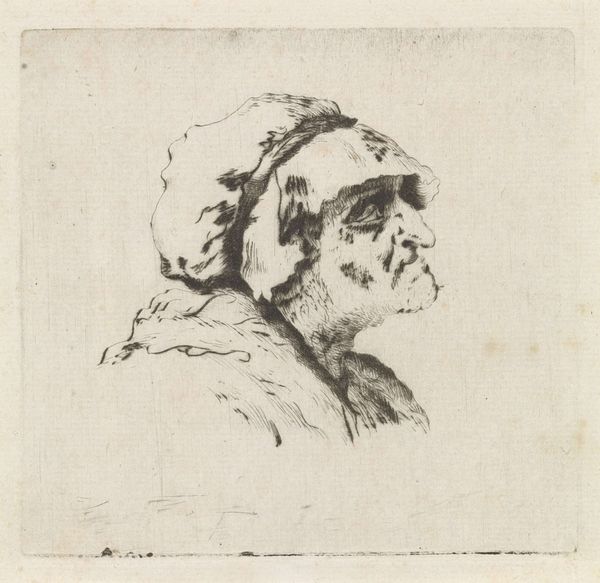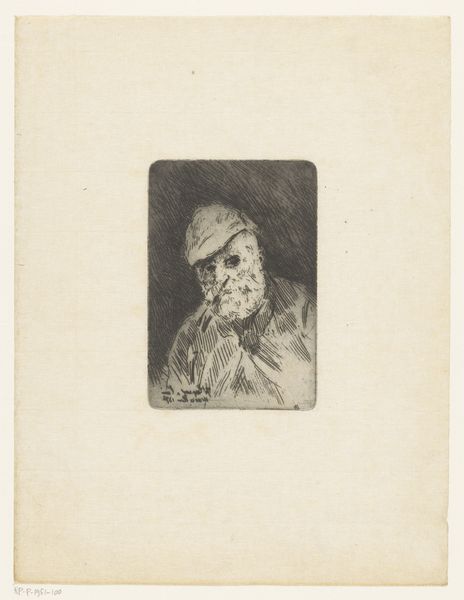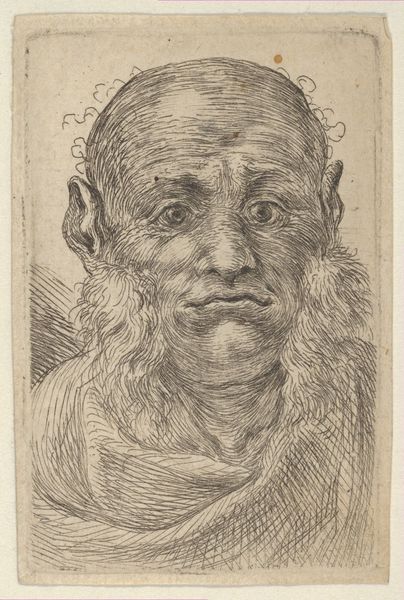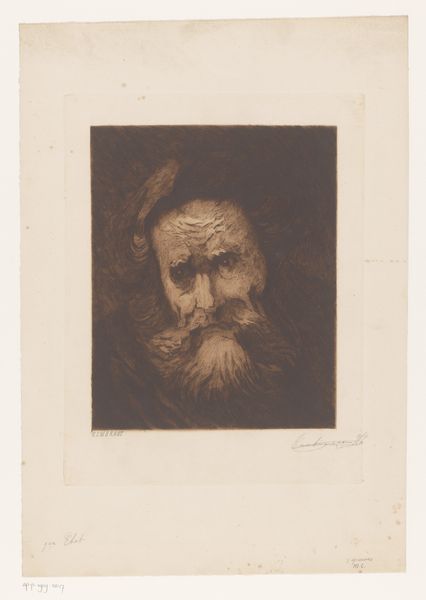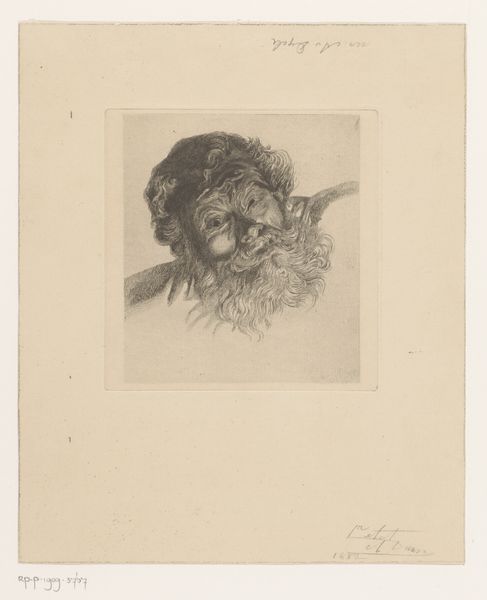
drawing, paper, ink
#
portrait
#
drawing
#
baroque
#
dutch-golden-age
#
charcoal drawing
#
figuration
#
paper
#
ink
#
pencil drawing
#
portrait drawing
Dimensions: height 81 mm, width 78 mm
Copyright: Rijks Museum: Open Domain
This etching of an old man was created by Gerard ter Borch the Elder in the Netherlands, sometime before 1662. The image connects to a wider context of 17th-century Dutch society through its realistic portrayal of everyday people. The portrait creates meaning through its emphasis on the individual. It conveys an image of aging, in a time when the elderly were seen as wise, especially within the family. This image can be contrasted with the grandeur of aristocratic portraiture to emphasize the rising merchant classes, who favoured art that spoke to their own values. The etching itself is a relatively accessible medium, especially compared to painted portraiture. The development of these printmaking technologies allowed for wider circulation of images and ideas, contributing to a more democratic art market. To better understand the image, we can study historical resources such as period literature and social histories. These sources can provide insight into the values, beliefs, and social structures that shaped the artist's world. Ultimately, the meaning of art is contingent on its social and institutional context.
Comments
No comments
Be the first to comment and join the conversation on the ultimate creative platform.
